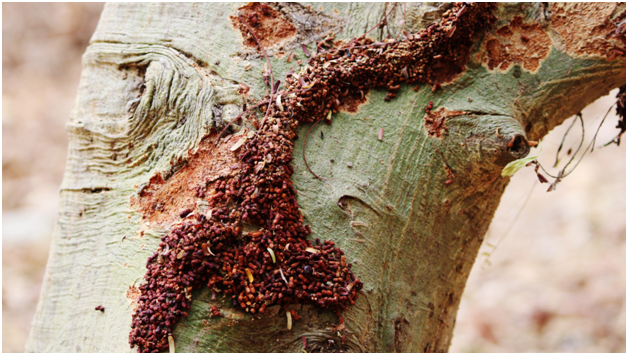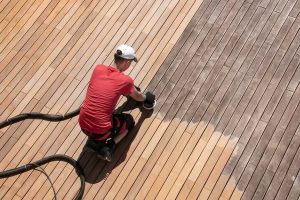7 Warning Signs of a Termite Infestation in Your Home

Termites are among the most destructive pests a homeowner can face. These silent invaders can cause extensive damage to the structure of a home before they are even detected. Unlike other pests that leave visible evidence of their presence, termites often work behind walls, under floors, and inside wooden structures, making them difficult to spot until serious damage has occurred. Identifying the early warning signs of a termite infestation can save you thousands in repairs and protect your home from further damage. Here are seven key indicators to watch for.
1. Discarded Wings Near Windows and Doors
One of the earliest signs of a termite infestation is finding discarded wings around windows, doors, or other light sources. Swarmers, or flying termites, emerge from their colonies in search of a new location to establish a nest. Once they find a suitable environment, they shed their wings and settle in.
If you notice tiny, translucent wings scattered around your home, it could be a sign that termites have already begun to build a colony nearby. Immediate inspection is recommended to prevent further infestation.
2. Hollow-Sounding Wood
Termites consume wood from the inside out, often leaving the surface intact while hollowing out the core. If you tap on a wooden structure, such as door frames, window sills, or furniture, and it sounds hollow or papery, there’s a strong chance termites have been feeding on it.
Using a screwdriver or other tool, you can lightly probe suspect areas—if the wood crumbles easily or appears damaged beneath the surface, you likely have a termite problem that needs attention.
3. Mud Tubes on Walls or Foundation
Subterranean termites, one of the most common types, build mud tubes as protective tunnels between their colony and their food source. These pencil-sized tubes can often be found along foundation walls, crawl spaces, and exterior surfaces.
Mud tubes help termites maintain moisture while they travel between their underground nests and the wood they are consuming. Breaking a section of the tube and checking for active termites inside can confirm an infestation. However, even if no termites are found, the presence of mud tubes alone is a red flag that should not be ignored.
4. Peeling or Bubbling Paint
If you notice peeling or bubbling paint on your walls, it may be more than just moisture damage—it could be an indication of termites. As termites tunnel through wooden structures, they create pockets of air and moisture buildup beneath the surface. This can cause paint or wallpaper to bubble, crack, or peel away.
While moisture issues can also cause similar damage, it’s best to investigate further and rule out termite activity. Addressing the problem early can help prevent more extensive damage to your home.
5. Sagging or Warped Floors and Doors
Termites weaken the wooden structures of a home, which can result in noticeable changes to floors, doors, and walls. Warped floorboards, sagging ceilings, or doors and windows that suddenly become difficult to open or close may indicate termite damage.
Because termites feed on the cellulose within wood, their activity can alter the structural integrity of a home over time. If your doors and windows start sticking for no apparent reason, termites could be the underlying cause.
6. Piles of Termite Droppings (Frass)
Drywood termites, unlike subterranean termites, don’t use mud tubes. Instead, they push their waste, known as frass, out of small holes in the wood they infest. This results in tiny piles of what looks like sawdust or coffee grounds near baseboards, window sills, and other wooden surfaces.
If you find unexplained mounds of fine, pellet-like debris around your home, it’s a strong indicator that termites are actively feeding within your walls or furniture. Cleaning up the droppings won’t stop the infestation, so it’s crucial to take action immediately.
7. Clicking Sounds Coming from the Walls
Believe it or not, termites can sometimes be heard before they are seen. If you put your ear close to an infested wall, you may hear faint clicking or rustling noises. This sound comes from soldier termites tapping their heads against wood to signal danger or from worker termites actively chewing through the material.
If you suspect termite activity, try listening closely during the quiet hours of the night when other household noises are minimal. This unusual sound can be a strong indication that termites are present and causing damage.
What to Do If You Suspect a Termite Infestation
If you notice any of these warning signs, it’s important to act fast. Termites can cause significant structural damage in a short period, leading to costly repairs. Here’s what you should do:
- Conduct a Thorough Inspection – Check all wooden structures, crawl spaces, and exterior walls for additional signs of termite activity.
- Seal Entry Points – Close off any cracks or openings in the foundation, walls, and around utility lines to prevent termites from entering your home.
- Reduce Moisture Levels – Termites thrive in damp environments. Fix leaks, improve ventilation, and use a dehumidifier in problem areas.
- Remove Food Sources – Keep firewood, mulch, and wooden debris away from your home’s foundation. Trim trees and shrubs that touch your house to reduce access points.
- Seek Professional Help – A professional termite control service can provide an in-depth assessment and implement effective treatment options to eliminate termites and prevent future infestations.
Termites are known as “silent destroyers” for a reason—they work behind the scenes, often causing extensive damage before they are detected. By staying vigilant and recognizing the early warning signs, homeowners can take proactive measures to prevent costly repairs and structural damage. If you suspect a termite infestation, don’t wait—take action to protect your home today.








